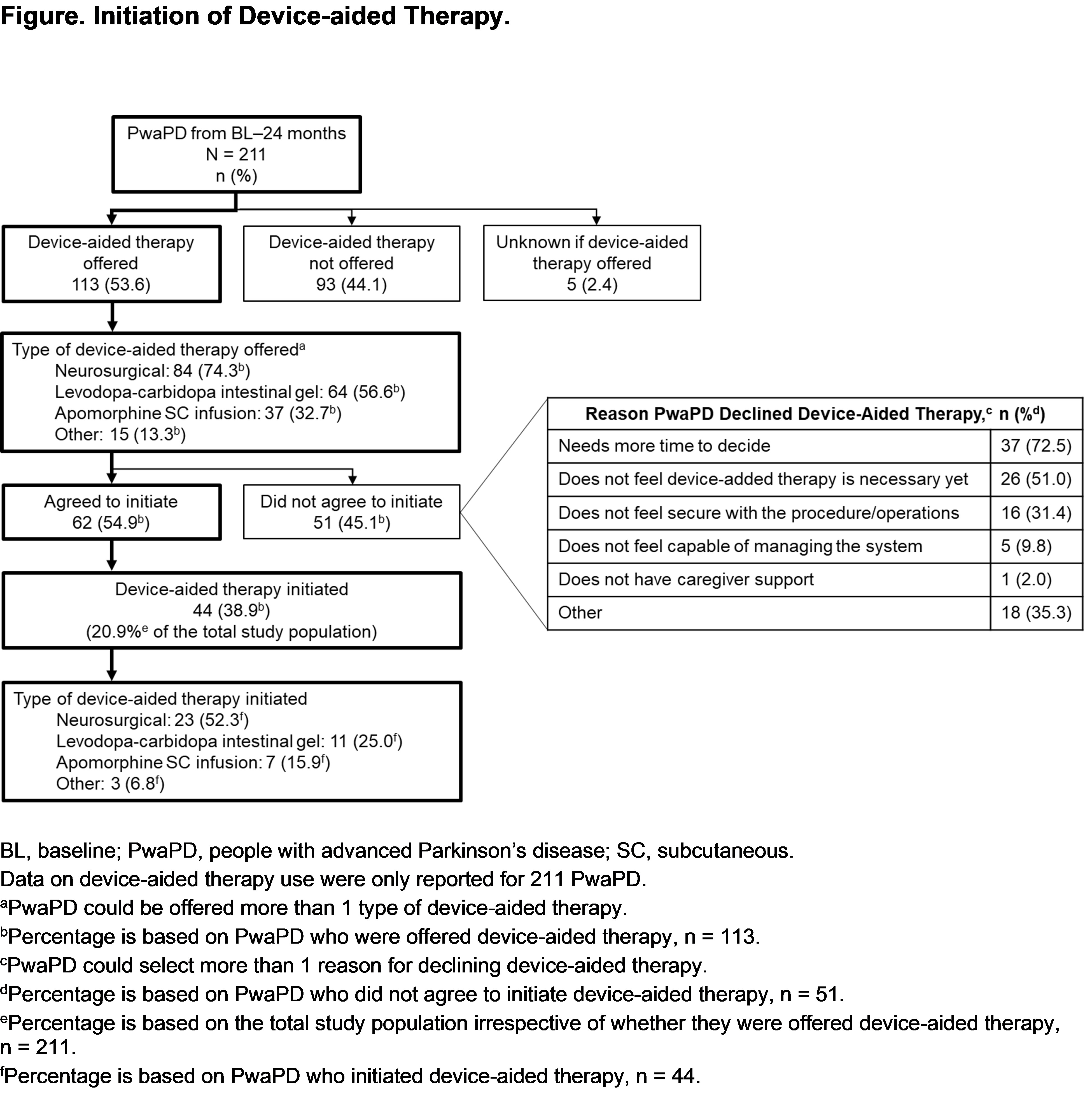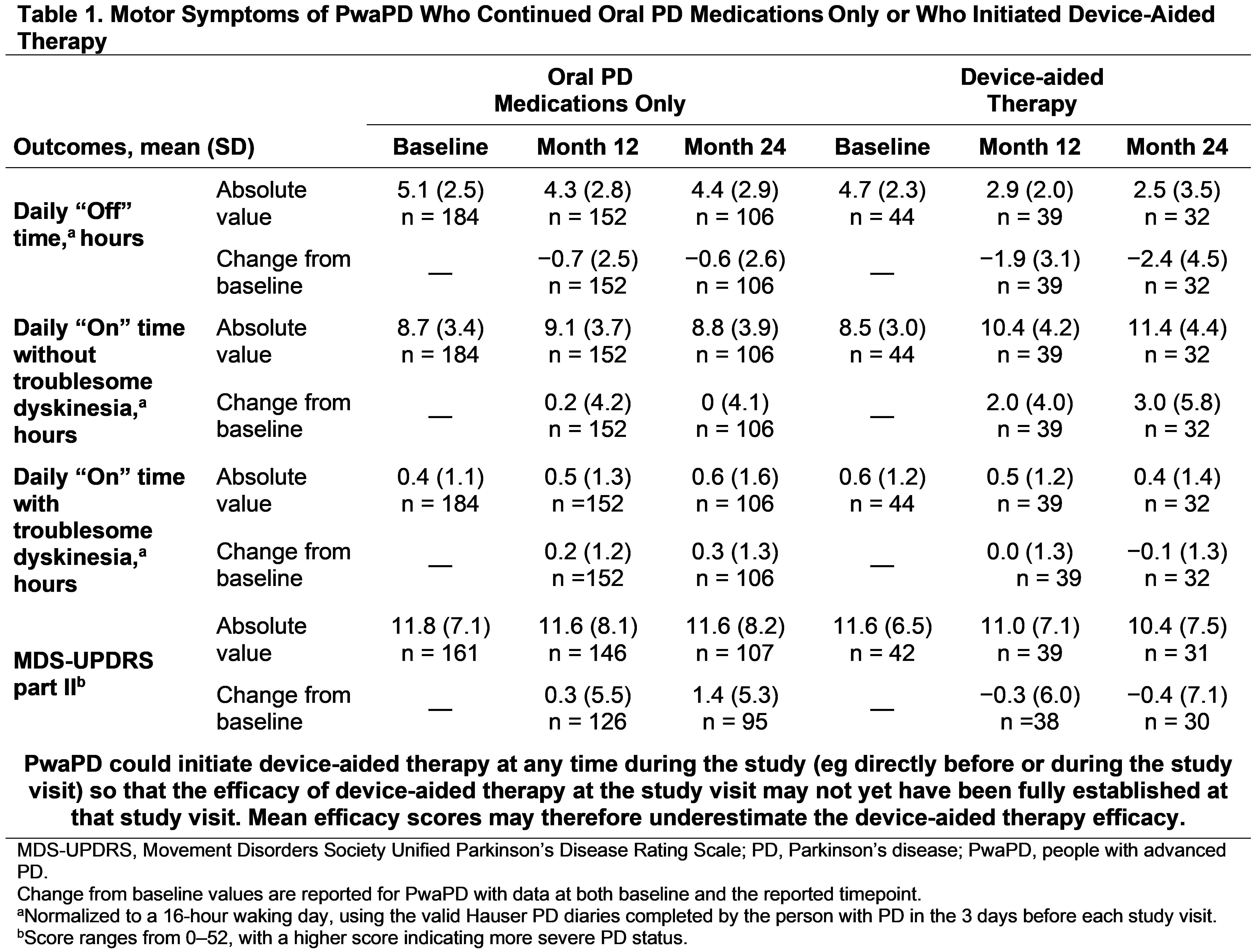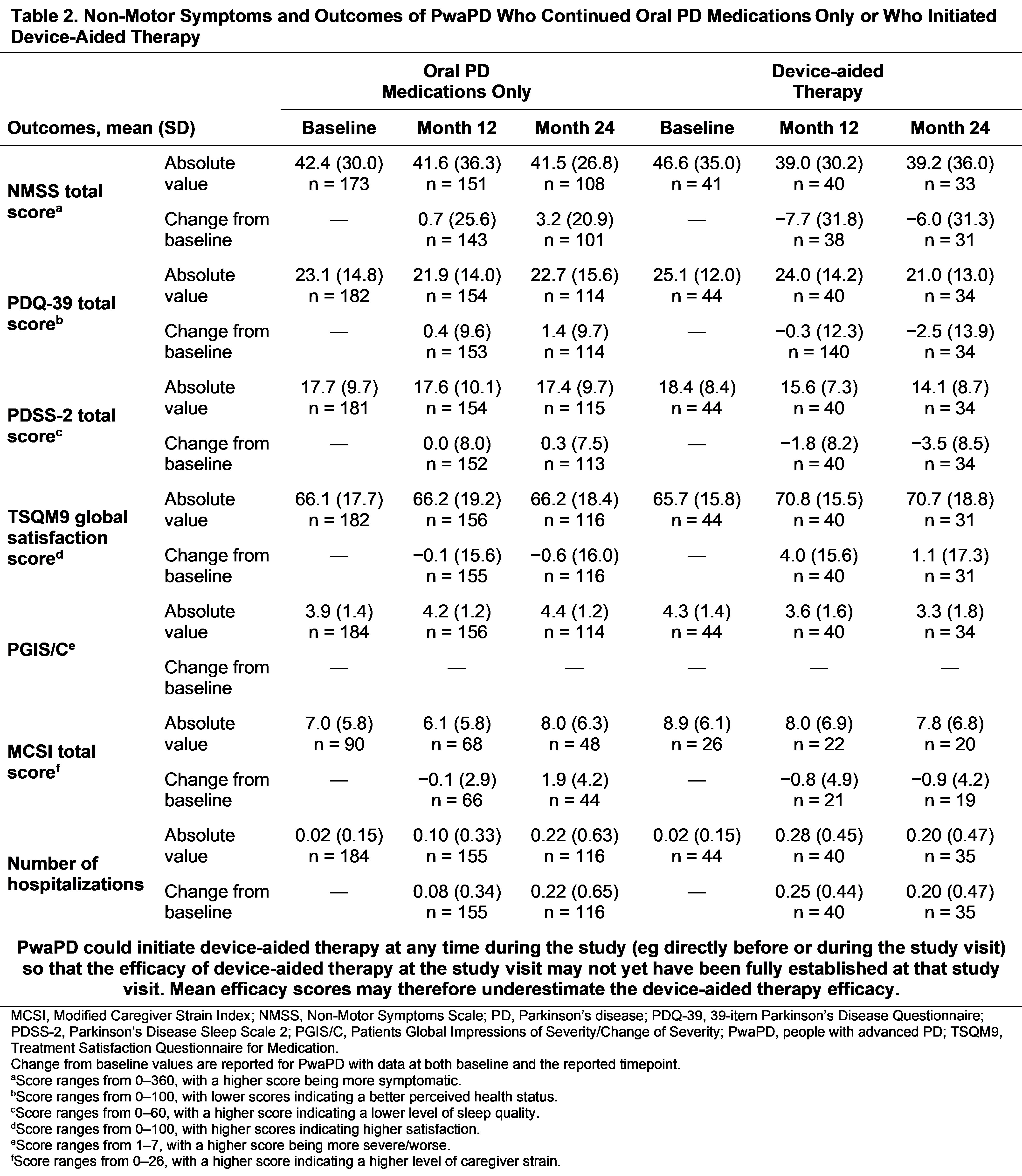Category: Parkinson’s Disease: Clinical Trials
Objective: To evaluate the long-term evolution of clinical outcomes and treatment patterns in people with advanced Parkinson’s disease (PwaPD) whose symptoms are inadequately controlled by their current therapy.
Background: Motor symptoms become increasingly challenging to manage with oral Parkinson’s disease (PD) medication as PD progresses. There are limited prospective, observational studies describing disease progression among PwaPD whose motor symptoms are inadequately controlled by oral medication.
Method: The 24-month international PROSPECT (PRospective Observational Study to evaluate the disease Progression and burdEn of disease of PD patients inadequately Controlled by conventional Therapy) study evaluated adults (aged ≥30 years) with levodopa-responsive PD and inadequately controlled motor symptoms (≥2.5-hours/day “Off” time, despite trials of available oral/transdermal/sublingual/inhalable medication). At enrollment, PwaPD could not be treated with any device-aided therapy. Outcomes were evaluated through month 24 for PwaPD with non-missing observations.
Results: This analysis included 229 PwaPD, with a mean (SD) age of 67.8 (9.4) years, PD duration of 8.9 (5.4) years, and daily “Off” time of 5.0 (2.5) hours. Device-aided therapy was offered to over half of PwaPD (53.6%, n/N = 113/211) and initiated by 20.9% of PwaPD (n/N = 44/211) [Figure]; 185 PwaPD continued to receive only oral medication. Reasons PwaPD declined device‑aided therapy included needing more time to decide and feeling that device-aided therapy was not yet necessary. Compared with PwaPD who continued oral medication, PwaPD who initiated device-aided therapy had greater improvements from baseline to month 24 in “Off” time (−0.6 [2.6] hours/day vs −2.4 [4.5] hours/day) and in “On” time without troublesome dyskinesia (+0 [4.1] hours/day vs +3.0 [5.8] hours/day) [Table1]. Motor and non-motor symptoms including sleep disruption and impressions of disease severity improved for PwaPD who initiated device-aided therapy, with little change or worsening for PwaPD who continued oral medication [Tables1,2]. Hospitalization rates were low and similar between groups.
Conclusion: Despite PwaPD having inadequately controlled symptoms at the start of the study, only 20.9% initiated device-aided therapy. PwaPD who initiated device-aided therapy reported improvements in motor and non-motor symptoms and lessened disease burden.
Figure
Table 1
Table 2
To cite this abstract in AMA style:
O. de Fabregues, D. Falconer, S. Heshmat, D. Houghton, D. Maltete, Y. Mukai, M. Rollins, L. Bergmann, P. Kukreja, K. Onuk, J. Sarna. Long-Term Evolution of Advanced Parkinson’s Disease Burden: Subgroup Analysis from the 24 Month International PROSPECT Observational Study [abstract]. Mov Disord. 2024; 39 (suppl 1). https://www.mdsabstracts.org/abstract/long-term-evolution-of-advanced-parkinsons-disease-burden-subgroup-analysis-from-the-24-month-international-prospect-observational-study/. Accessed December 7, 2025.« Back to 2024 International Congress
MDS Abstracts - https://www.mdsabstracts.org/abstract/long-term-evolution-of-advanced-parkinsons-disease-burden-subgroup-analysis-from-the-24-month-international-prospect-observational-study/



